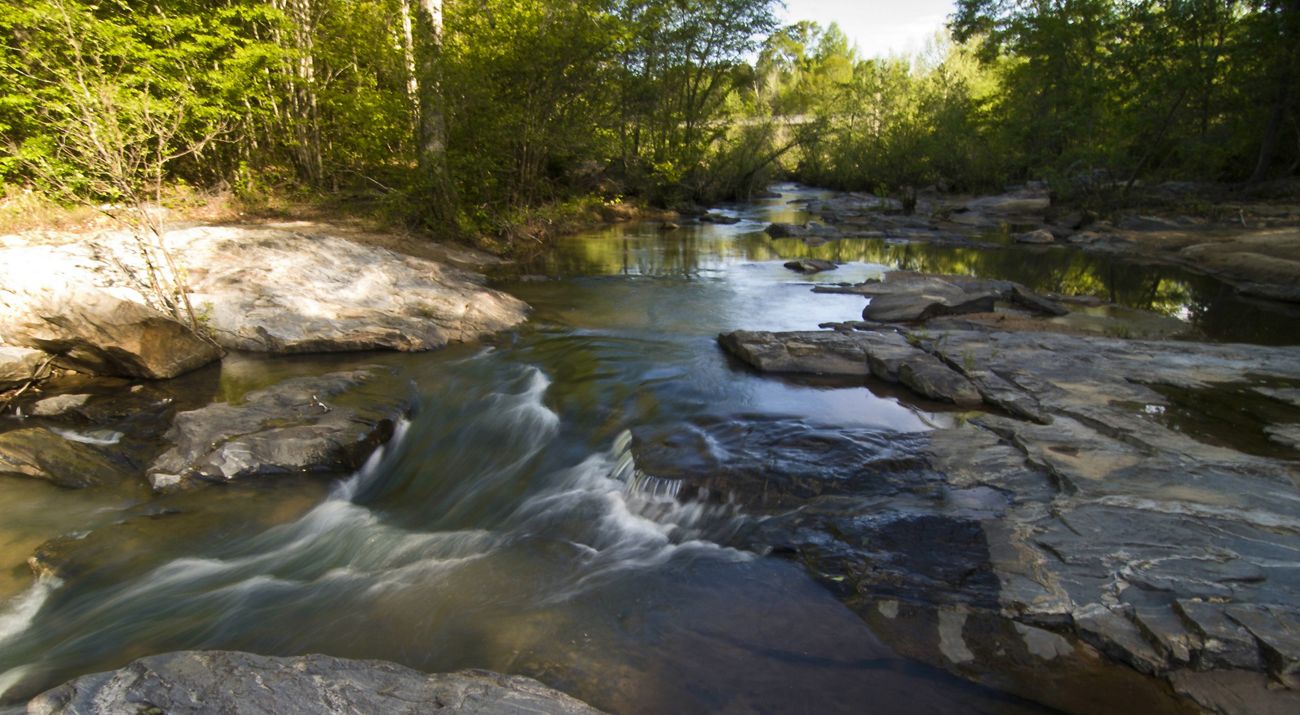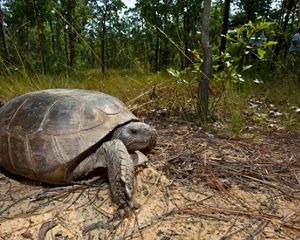
- Phone: 404-873-6984
-
Follow
Rivers and streams tumble toward lower elevations as changes in soil help create a rich and diverse area like no other.
January 2025 Update: The Chattahoochee Fall Line represents one of the greatest conservation success stories in Georgia, with dozens of organizations coming together to protect this critical landscape that is home to countless threatened and endangered species. Now, we are ready to take that work even further following a major expansion of our footprint in the region. We recently opened a new headquarters in the CFL, giving us a new home in the landscape with plenty of space to grow. If you want to learn more about how this historic achievement came together and what it means for conservation in the area, you can read all about it here.
-------------------------------------------------------------------------------------
Flowing from the Piedmont, the Chattahoochee River and its tributaries cross the rocky shoals and sand hills of the Fall Line and flow through forests of fire-dependent longleaf pine and rich floodplain hardwoods.
Vast longleaf pine forests provide shelter for rare gopher tortoises and red-cockaded woodpeckers; unusual pitcher plants and wild orchids thrive in wetlands; and rivers, shoals and forests support diverse plant and animal populations.
Hunters, fishermen, thriving residential and commercial communities, farmers, the forestry industry and the Army at Fort Moore make up some of the hundreds of thousands of people who have a stake in the Chattahoochee Fall Line.
The Nature Conservancy works with dozens of federal, state and local agencies, landowners and volunteer groups across the region on connecting protected lands and managing them in a way that help nature and communities thrive.
For many Georgians, the Fall Line means the place where north and south Georgia divide, but the term really comes from nature. There’s a change in the landscape that defines the Fall Line that naturally moves from Augusta in the east to Columbus in the west—and even into Alabama—where clay soils give way to sandier soils and rivers and streams fall from higher to lower elevations.
This landscape has been a natural destination for Native and European settlers for centuries. Vast longleaf pine forests dominated the area and the rich soil made living off the land possible. Rivers, streams and wetlands sustained abundant and varied native wildlife and plant communities.
But as population and farming along the Chattahoochee Fall Line grew, so did private and federal industry, drastically altering or endangering many of the region’s natural systems.
That’s why The Nature Conservancy is working with partners including private landowners, business interests, the Department of Defense and the Chattahoochee Fall Line Conservation Partnership to protect the ecological diversity and natural heritage of the Chattahoochee Fall Line while meeting the needs of this growing community. Foremost on the plan is to create a sustainable landscape of native wildlife and plant communities that support forestry, farming, hunting, outdoor recreation, tourism and the military training mission at Fort Moore.
Land protection is the primary strategy for conservation in this area, with an emphasis on property surrounding Fort Moore. As federal land, this large military installation has to actively work to protect the endangered species found here, specifically the red-cockaded woodpecker. When new lands around the base are protected, this gives the endangered birds more places to roam and rest, leading to healthier populations overall. Very tied to land protection is management, and that means fire in this neck of the woods. Longleaf pine forests need fire to rejuvenate, and TNC is leading the way when it comes to prescribed fire on the Fall Line.
Related Articles

Gopher Tortoise
The gopher tortoise is one of the oldest living species on the planet, yet it's threatened or nearly extinct in parts of its range. Find out how we're protecting gopher tortoise habitat!

Red-Cockaded Woodpecker
Today there are just 1% of the red-cockaded woodpeckers than there were at the time of European settlement. The red-cockaded woodpecker has been on the endangered species list since October 1970, but TNC is working hard to change that.
